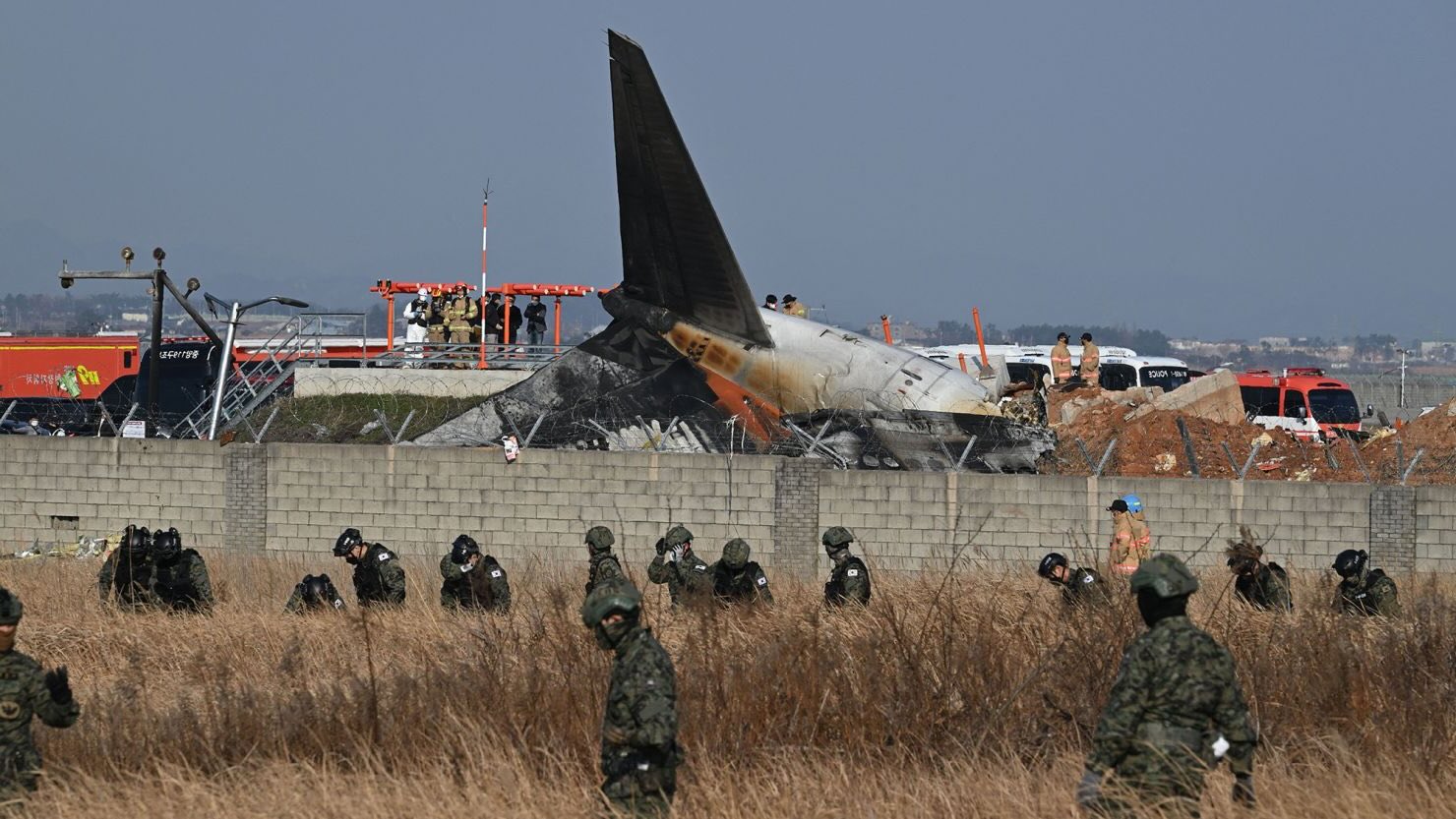
What happened in the Korea airplane crash? The Korea airplane crash, specifically Korean Air Flight 801, occurred on August 6, 1997. This tragic event happened as the aircraft approached Guam's Antonio B. Won Pat International Airport. Due to poor weather conditions and pilot error, the plane crashed into a hillside, resulting in the loss of 228 lives out of the 254 people on board. This disaster highlighted significant issues in aviation safety, including the importance of proper training and communication. The crash led to changes in airline procedures and regulations to prevent similar tragedies in the future. Understanding these facts helps us grasp the impact and lessons learned from this unfortunate event.
The Korea Airplane Crash: A Tragic Event
The Korea airplane crash remains one of the most tragic events in aviation history. This incident has left a lasting impact on the aviation industry and the families of those involved. Here are some crucial facts about this unfortunate event.
-
Date of the Crash: The crash occurred on August 6, 1997. This date is etched in the memories of many due to the magnitude of the tragedy.
-
Flight Number: The ill-fated flight was Korean Air Flight 801. This flight was en route from Seoul, South Korea to Guam.
-
Aircraft Type: The aircraft involved was a Boeing 747-3B5. Known for its size and capacity, this model is a common sight in international travel.
-
Fatalities: Out of the 254 people on board, 228 lost their lives. This high number of fatalities underscores the severity of the crash.
-
Survivors: Miraculously, 26 people survived the crash. These survivors faced a long road to recovery, both physically and emotionally.
Causes and Contributing Factors
Understanding the causes of the crash is essential for preventing future tragedies. Several factors contributed to this disaster.
-
Pilot Error: One of the primary causes was pilot error. Miscommunication and misjudgments played a significant role in the crash.
-
Weather Conditions: Poor weather conditions, including heavy rain and low visibility, made landing difficult. These adverse conditions added to the challenges faced by the flight crew.
-
Navigation System Issues: The aircraft's navigation system was not functioning correctly. This malfunction led to incorrect altitude readings.
-
Crew Fatigue: Fatigue among the flight crew was another contributing factor. Long hours and insufficient rest can impair judgment and reaction times.
-
Inadequate Training: The crew's training was found to be inadequate. Proper training is crucial for handling emergencies and complex situations.
Immediate Aftermath and Response
The immediate response to the crash was critical in saving lives and managing the situation. Here are some key points about the aftermath.
-
Rescue Efforts: Rescue teams were dispatched quickly to the crash site. Their prompt actions helped save the lives of the survivors.
-
Medical Assistance: Medical teams provided urgent care to the injured. This immediate medical attention was vital for the survivors' recovery.
-
Investigation: An investigation was launched to determine the causes of the crash. This investigation involved multiple agencies and experts.
-
Public Reaction: The public reaction was one of shock and grief. The tragedy affected not only those directly involved but also the broader community.
-
Media Coverage: The crash received extensive media coverage. This coverage brought attention to the issues of aviation safety and the need for improvements.
Long-term Impact and Changes
The long-term impact of the crash led to significant changes in aviation policies and practices. These changes aimed to enhance safety and prevent similar incidents.
-
Regulatory Changes: New regulations were introduced to improve aviation safety. These regulations addressed issues such as crew training and fatigue management.
-
Technological Improvements: Advances in technology were implemented to enhance navigation systems. These improvements aimed to prevent similar malfunctions in the future.
-
Safety Protocols: Enhanced safety protocols were established. These protocols included better communication practices and emergency procedures.
-
Training Programs: Comprehensive training programs for flight crews were developed. These programs focused on handling emergencies and improving decision-making skills.
-
Support for Families: Support systems were put in place for the families of the victims. This support included counseling and financial assistance.
Lessons Learned
The Korea airplane crash taught valuable lessons that continue to influence aviation safety today. These lessons highlight the importance of vigilance and continuous improvement.
-
Importance of Communication: Effective communication among the flight crew is crucial. Miscommunication can lead to catastrophic outcomes.
-
Need for Vigilance: Constant vigilance and adherence to safety protocols are essential. Complacency can have dire consequences.
The Korea airplane crash remains a somber reminder of the importance of safety in aviation. The lessons learned from this tragedy continue to shape the industry, ensuring that such an event never happens again.
Lessons from the Korea Airplane Crash
The Korea airplane crash offers crucial insights into aviation safety. Human error played a significant role, highlighting the need for better pilot training and communication. The crash also underscored the importance of advanced technology in preventing accidents. Improved navigation systems and real-time data can make a big difference.
Regulatory bodies must enforce stricter guidelines to ensure airlines follow safety protocols. Passengers, too, should be aware of safety procedures. Knowing how to react in emergencies can save lives.
Ultimately, the crash serves as a reminder that vigilance and continuous improvement are key to safer skies. By learning from past mistakes, the aviation industry can work towards a future where such tragedies are less likely to occur. Stay informed, stay safe, and always be prepared.
Was this page helpful?
Our commitment to delivering trustworthy and engaging content is at the heart of what we do. Each fact on our site is contributed by real users like you, bringing a wealth of diverse insights and information. To ensure the highest standards of accuracy and reliability, our dedicated editors meticulously review each submission. This process guarantees that the facts we share are not only fascinating but also credible. Trust in our commitment to quality and authenticity as you explore and learn with us.
